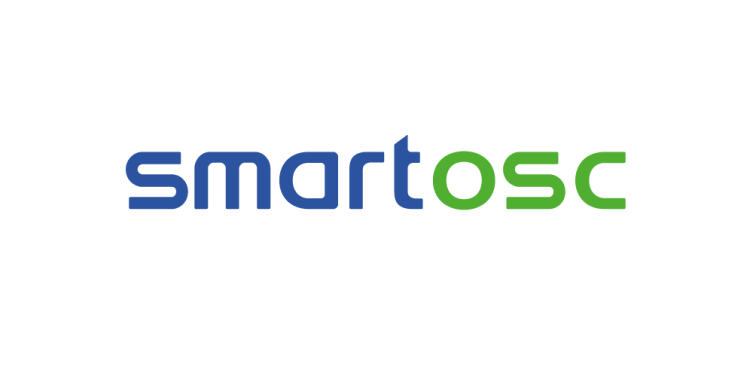In Australian workplaces, ensuring safety and compliance is crucial for operational success and protecting both employees and assets. Many businesses face challenges in implementing effective safety measures and keeping up with regulations. A well-designed workplace safety checklist is essential for addressing hazards, meeting legal requirements, and promoting a safety-focused culture.
This article will explore key elements of an effective safety checklist, common pitfalls, and practical implements for creating a safer, compliant work environment.
Understanding Workplace Safety Regulations in Australia
Workplace safety is a fundamental aspect of any business operation, and in Australia, it is governed by a comprehensive set of regulations designed to protect employees and ensure a safe working environment.
The Work Health and Safety (WHS) Act and associated regulations outline the legal requirements for maintaining safety standards across various industries. These laws are crucial for minimizing risks and preventing workplace accidents, and they apply to all employers and employees.
WHS Act and Regulations
The WHS Act serves as the cornerstone of workplace safety legislation in Australia. It sets out the responsibilities of employers to ensure, as far as reasonably practicable, the health and safety of their workers. This includes providing a safe work environment, proper training, and maintaining equipment.
The Act is supported by various regulations that provide detailed requirements on specific safety aspects, such as hazard identification, risk assessment, and emergency procedures.
Components of a Workplace Safety Checklist
A comprehensive workplace safety checklist is essential for maintaining a safe and compliant working environment. Here are the key components to include in your checklist:
General Safety
- Emergency Procedures: Ensure that emergency exits are clearly marked and accessible. Verify that evacuation plans are in place and regularly practiced.
- First Aid: Confirm that first aid kits are stocked and easily accessible. Ensure employees are trained in first aid procedures.
-
Electrical Safety
- Inspection: Regularly inspect electrical wiring and equipment for wear and tear. Ensure all electrical installations are up to code.
- Training: Provide training for employees on safe handling of electrical equipment and procedures for reporting electrical faults.
Height Safety
- Fall Protection: Implement measures such as guardrails, harnesses, and safety nets for work performed at height.
- Training: Ensure employees who work at height are trained in the use of fall protection equipment.
Plant and Equipment
- Maintenance: Regularly service and maintain machinery and equipment to ensure they are in safe working condition.
- Training: Train employees in the safe operation of plant and equipment, including proper use and handling.
Excavations
- Shoring and Support: Ensure excavations are properly shored and supported to prevent collapse.
- Access: Provide safe access and egress to and from excavation sites.
Traffic Management
- Signage: Use appropriate signage to direct vehicle and pedestrian traffic safely around work sites.
- Training: Train employees in safe traffic management practices, especially in areas with high vehicle movement.
Chemical Safety
- Storage: Store chemicals properly according to their type and hazard classification. Ensure labels and safety data sheets are up to date.
- Handling: Train employees in safe handling and disposal procedures for chemicals.
Hazardous Chemicals
- Risk Assessment: Conduct risk assessments for the use of hazardous chemicals and implement controls to mitigate risks.
- Personal Protective Equipment (PPE): Provide appropriate PPE for handling hazardous chemicals and ensure its proper use.
Welding Safety
- Equipment Inspection: Regularly inspect welding equipment for safety and functionality.
- Ventilation: Ensure proper ventilation in areas where welding is performed to avoid the buildup of harmful fumes.
Work Environment Risks and Hazards
- Risk Assessment: Continuously assess the work environment for potential risks and hazards.
- Mitigation Measures: Implement control measures to address identified risks and hazards, and ensure ongoing monitoring and review.
Including these components in your workplace safety checklist will help you create a safer work environment and ensure compliance with relevant safety regulations.
Implementing the Workplace Safety Checklist
Ensuring a safe and healthy workplace is a critical responsibility for employers. Implementing a comprehensive workplace safety checklist can help minimize risks and create a secure environment for employees.
Here are four essential steps to establish and maintain workplace safety.
Step 1: Establish Safety Protocols in the Workplace
Developing clear and comprehensive safety protocols is the foundation of a safe work environment. These protocols should outline procedures for handling hazardous materials, operating machinery, and responding to emergencies. Regularly communicate these protocols to all employees and ensure they are easily accessible.
Step 2: Identify and Manage Hazards
Conduct regular inspections to identify potential hazards in the workplace. This includes assessing equipment, workspaces, and processes for risks. Once hazards are identified, implement measures to manage or eliminate them, such as installing safety guards on machinery, providing personal protective equipment (PPE), or redesigning workflows to minimize exposure to risks.
Step 3: Provide Training and Supervision for Workplace Health and Safety
Ongoing training is crucial for maintaining workplace safety. Ensure all employees receive comprehensive training on safety protocols, hazard identification, and proper use of PPE. Additionally, supervisors should be trained to recognize unsafe practices and to enforce safety standards consistently.
Step 4: Evaluate and Update Safety Measures
Regularly evaluate the effectiveness of safety measures and update them as needed. This includes reviewing incident reports, conducting safety audits, and seeking feedback from employees. Staying informed about new safety regulations and technologies can also help improve workplace safety.
3 Examples of Workplace Safety Checklists
Implementing workplace safety checklists tailored to specific environments helps ensure that all necessary precautions are taken to protect employees. Here are three examples of safety checklists for different workplace scenarios:
Self-Inspection on Construction Sites
A self-inspection checklist for a construction company employee encompasses various critical items. These include personal protective equipment such as hard hats, safety glasses, and gloves. Other items pertain to the work site itself, like trip hazards and proper signage. The checklist also covers equipment used on the construction site, such as power tools and ladders.
While the content of this checklist may vary depending on the company, it often includes items such as
- General health and safety provisions
- Life-saving equipment and PPE management
- Fire protection guidelines, proper handling, usage, storage, and disposal of materials
- Welding, cutting, steel erection, and demolition practices
- Masonry and concrete construction guidelines
- Electrical wiring and power transmission
Housekeeping Checks
Good housekeeping practices are essential for maintaining a safe and efficient workplace. A housekeeping safety checklist might include:
- Ensure that walkways and aisles are clear of obstructions and trip hazards.
- Check that spills are promptly cleaned up and that spill kits are readily available.
- Verify that materials and equipment are stored securely and do not pose a risk of falling or causing injury.
- Ensure that waste is disposed of properly and that recycling protocols are followed.
- Confirm that all work areas are adequately lit to prevent accidents and improve visibility.
Fall Protection Measures
Falls are a leading cause of workplace injuries, making fall protection measures critical. A fall protection checklist might include:
- Ensure guardrails are installed around elevated platforms, open-sided floors, and other areas where falls could occur.
- Verify that safety nets are in place and correctly positioned to catch workers in the event of a fall.
- Check that PFAS, such as harnesses and lanyards, are available, in good condition, and properly used.
- Confirm that all employees working at heights have received appropriate fall protection training.
- Conduct regular inspections of fall protection equipment and systems to ensure they are functioning correctly and have not been damaged.
Implementing these safety checklists helps create a safer work environment by systematically addressing potential hazards and ensuring compliance with safety regulations.
Wrap Up
In nutshel, implementing a comprehensive workplace safety checklist is essential for ensuring compliance with Australian regulations and maintaining a safe working environment. By addressing potential hazards and providing clear safety protocols, businesses can protect their employees and assets effectively. Regular inspections, ongoing training, and constant evaluation of safety measures are crucial steps in fostering a safety-focused culture.
For businesses in IT jobs in Vietnam, such as those exploring career opportunities at SmartOSC Careers, adhering to safety standards is equally important. SmartOSC Careers is committed to creating a secure workplace while actively recruiting top talent in IT to drive innovation and success.






